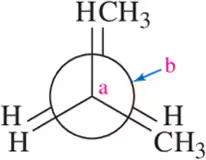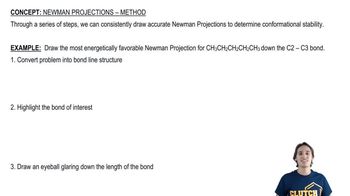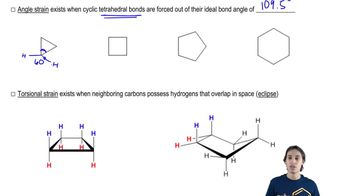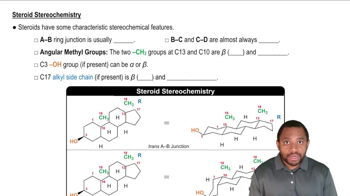For rotation about the C-3---C-4 bond of 2-methylhexane, do the following:
a. Draw the Newman projection of the most stable conformer.
b. Draw the Newman projection of the least stable conformer.

 Verified step by step guidance
Verified step by step guidance Verified video answer for a similar problem:
Verified video answer for a similar problem:



 0:34m
0:34mMaster Introduction to Drawing Newman Projections with a bite sized video explanation from Johnny
Start learning